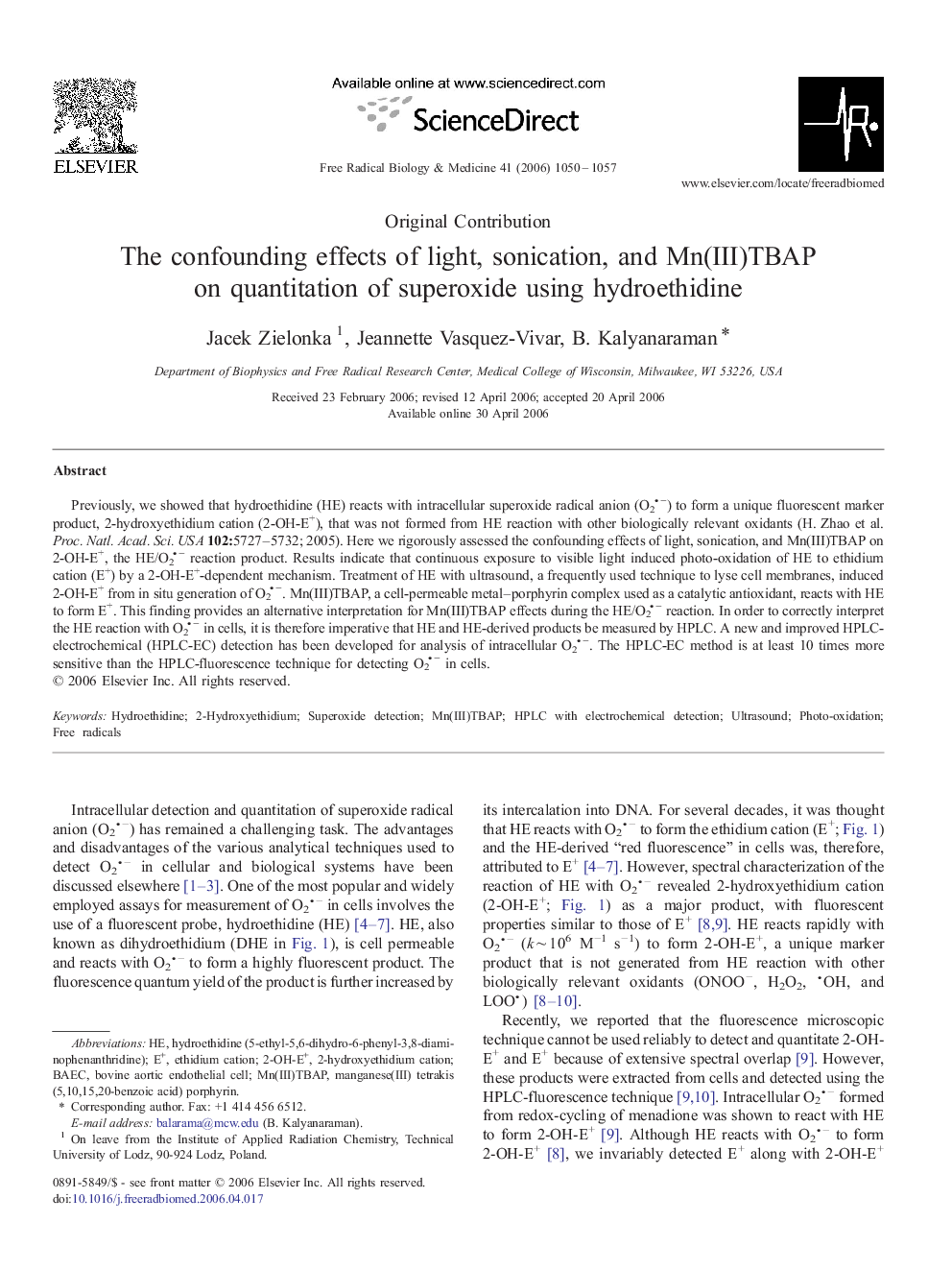| Article ID | Journal | Published Year | Pages | File Type |
|---|---|---|---|---|
| 1911989 | Free Radical Biology and Medicine | 2006 | 8 Pages |
Previously, we showed that hydroethidine (HE) reacts with intracellular superoxide radical anion (O2−) to form a unique fluorescent marker product, 2-hydroxyethidium cation (2-OH-E+), that was not formed from HE reaction with other biologically relevant oxidants (H. Zhao et al. Proc. Natl. Acad. Sci. USA102:5727–5732; 2005). Here we rigorously assessed the confounding effects of light, sonication, and Mn(III)TBAP on 2-OH-E+, the HE/O2− reaction product. Results indicate that continuous exposure to visible light induced photo-oxidation of HE to ethidium cation (E+) by a 2-OH-E+-dependent mechanism. Treatment of HE with ultrasound, a frequently used technique to lyse cell membranes, induced 2-OH-E+ from in situ generation of O2−. Mn(III)TBAP, a cell-permeable metal–porphyrin complex used as a catalytic antioxidant, reacts with HE to form E+. This finding provides an alternative interpretation for Mn(III)TBAP effects during the HE/O2− reaction. In order to correctly interpret the HE reaction with O2− in cells, it is therefore imperative that HE and HE-derived products be measured by HPLC. A new and improved HPLC-electrochemical (HPLC-EC) detection has been developed for analysis of intracellular O2−. The HPLC-EC method is at least 10 times more sensitive than the HPLC-fluorescence technique for detecting O2− in cells.
